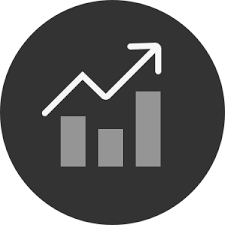Current Trends in Consumer Borrowing
Borrowing is one of the commonest ways to raise funds for projects when you don’t have sufficient capital. Although some people consider it unhealthy, especially when it becomes a lifestyle, it can come in handy when you need quick financial assistance. But remember, repaying borrowed money is never as easy as borrowing it.
During many past periods, Americans have fallen behind on their debt payments. Many Americans may not have fully recovered from the past economic recession. Furthermore, the recent pandemic that ravaged sections of the economy leaving many Americans jobless.
However, there has so far been an upward trend in consumer borrowing primarily resulting from an increase in Americans with personal “consolidation loans.” This increase has made it quite difficult to know whether these individuals are actually well-qualified for loans. Here are some of the leading trends in consumer borrowing.
#1. Auto Loans
Auto loans are loans taken by individuals to get a new or used vehicle. Aside from household consumer trends, the auto consumer trend is one of the leading indicators of financial activity in 2021.
When it comes to facilitating recovery in the consumer borrowing industry, auto loans are a source of stability. The vehicles obtained through auto loans are secured and usually by solid collateral – the car.
Although there was some deterioration in performance for auto lenders. This drawback was probably due to a reduced cash flow precipitated by the pandemic, and not the consumers’ unwillingness to pay their debts. However, the auto loan remains a credible source of capital for qualified borrowers.
#2. The Search For Lower Risk Consumers
As of 2020, there was an increase in the rates of unemployment which affected loan repayment by Americans. Consumer debt rose in the first quarter of 2020 but went down into 2021.
However, the remedy for loan recovery rate lies in the lending industry’s search and need for low-risk consumers. These are higher income consumers that can make steady payments on the loans they borrowed.
#3. Diversify The Lending Landscape
In 2020, Amazon and Apple collaborated with Goldman Sachs to offer small business loans to traders on the Amazon platform. Amazon and Apple are often regarded as upcoming nonbanks. Goldman Sachs is currently using its technology services to promote uptake for its Marcus high-interest credit card business, which was launched in 2016.
Marcus is promoted as an online-only bank savings account. It has no-fee personal loans and penalty-free certificates of deposits, but it’s clear intent is credit cards for everyone. Its credit card rates still remain well above the federal bank rate and real estate loan rates. Amazon also has a lending platform for sellers creating a new source of credit and debt for small businesses that vastly increases Amazon’s involvement in the high-interest lending game.
It is likely that all of these big companies and further mergers will create large lending bases with access to hundreds of millions of American consumers through online lending platforms.
Conclusion
Understanding the current trends in consumer borrowing can help you know where and how you can procure the right loan for your needs, or more importantly, who is after your business and your money. Just remember that carrying long-term loans at higher rates can strain your family or small business monthly budget.

